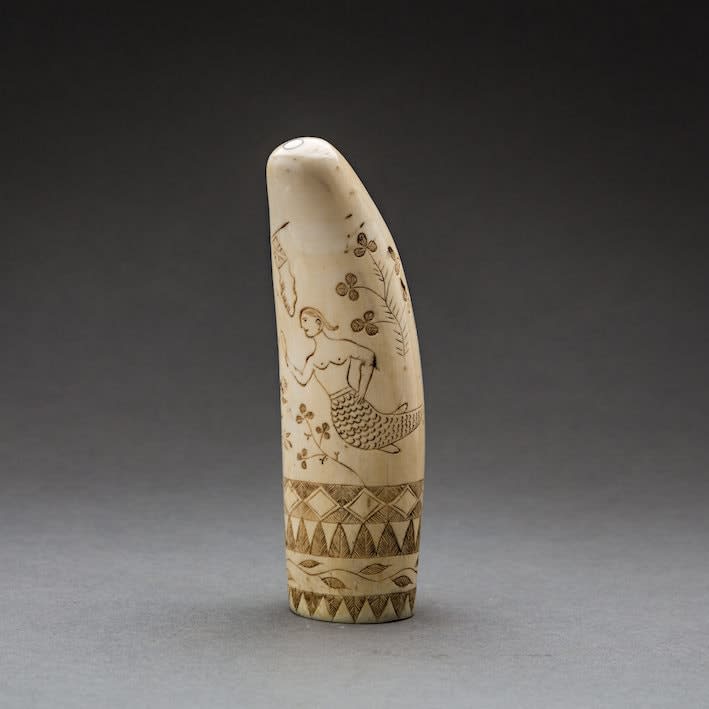Scrimshaw Ivory, 19th Century CE
2 x 6
K.16
This piece represents a very excellent example of Scrimshaw. Scrimshaw is the name given to scrollwork, engravings, and carvings done in bone or ivory. Typically it refers to the handiwork...
This piece represents a very excellent example of Scrimshaw. Scrimshaw is the name given to scrollwork, engravings, and carvings done in bone or ivory. Typically it refers to the handiwork created by whalers made from the byproducts of harvesting marine mammals. It is most commonly made out of the bones and teeth of sperm whales, the baleen of other whales, and the tusks of walruses. It takes the form of elaborate engravings in the form of pictures and lettering on the surface of the bone or tooth, with the engraving highlighted using a pigment, or, less often, small sculptures made from the same material. However the latter really fall into the categories of ivory carving, for all carved teeth and tusks, or bone carving. The making of scrimshaw began on whaling ships between 1745 to 1759 on the Pacific Ocean, and survived until the ban on commercial whaling. The practice survives as a hobby and as a trade for commercial artisans. This piece has a quite strong carving style, with shapes that tend to be neat and slightly primitive. On one side, the piece features the representation of a mermaid surrounded by clovers, on the other part it is possible to observe a beautifully carved anchor and other leaves-like decorative motifs. The object features a band of geometric patterns that rolls up the base.
